aerospace
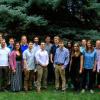 A CU Boulder student team has been named a finalist in NASA’s CubeQuest Challenge small satellite design and launch competition. The team received the news in a conference call with NASA, according to Alec Forsman, an aerospace graduate student and
A CU Boulder student team has been named a finalist in NASA’s CubeQuest Challenge small satellite design and launch competition. The team received the news in a conference call with NASA, according to Alec Forsman, an aerospace graduate student and The Research & Innovation Office, previously the Office of the Vice Chancellor for Research, creates impact by cultivating and supporting collaboration, transformation and leadership across CU Boulder. The recently released annual
The Research & Innovation Office, previously the Office of the Vice Chancellor for Research, creates impact by cultivating and supporting collaboration, transformation and leadership across CU Boulder. The recently released annual International Space StationIf you gaze at the night sky from Earth in just the right place, you will see the International Space Station (ISS), a bright speck of light hurtling through space at 5 miles per second as it orbits 220 miles above the
International Space StationIf you gaze at the night sky from Earth in just the right place, you will see the International Space Station (ISS), a bright speck of light hurtling through space at 5 miles per second as it orbits 220 miles above the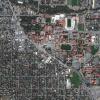 CU Boulder and DigitalGlobe Inc. this week announced a partnership to provide access to DigitalGlobe’s industry-leading high-resolution satellite imagery, data and analytics tools to the university’s Earth Lab
CU Boulder and DigitalGlobe Inc. this week announced a partnership to provide access to DigitalGlobe’s industry-leading high-resolution satellite imagery, data and analytics tools to the university’s Earth Lab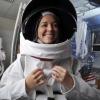 Capitalizing on its reputation as a top public university in space research, the University of Colorado Boulder is launching a brand new Space Minor program for undergraduate students.The program, a component of CU Boulder’s Grand Challenge:
Capitalizing on its reputation as a top public university in space research, the University of Colorado Boulder is launching a brand new Space Minor program for undergraduate students.The program, a component of CU Boulder’s Grand Challenge: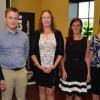 Paige Anderson Arthur got hooked on science fiction and the prospect of space travel when she started watching Star Trek at age 13. Now, the Denver native is immersed in aerospace engineering at CU Boulder, which is why she joined in the celebration
Paige Anderson Arthur got hooked on science fiction and the prospect of space travel when she started watching Star Trek at age 13. Now, the Denver native is immersed in aerospace engineering at CU Boulder, which is why she joined in the celebration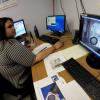 Shankini Doraisingam, staff operator of Bioserve Space Technologies, is monitoring astronaut Kate Rubins on the International Space StationBOULDER — Well before dawn, a wall-mounted video monitor flickers to life in a narrow, windowless room on the
Shankini Doraisingam, staff operator of Bioserve Space Technologies, is monitoring astronaut Kate Rubins on the International Space StationBOULDER — Well before dawn, a wall-mounted video monitor flickers to life in a narrow, windowless room on the Vice Chancellor for Research Terri Fiez named Abby Benson as the executive director of CU Boulder AeroSpace Ventures (ASV) effective July 1. Benson was previously the associate vice president of Government Relations for the University of Colorado
Vice Chancellor for Research Terri Fiez named Abby Benson as the executive director of CU Boulder AeroSpace Ventures (ASV) effective July 1. Benson was previously the associate vice president of Government Relations for the University of Colorado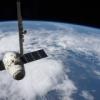 High-tech space hardware designed and built at the University of Colorado Boulder for biomedical experiments was successfully launched aboard the commercial SpaceX Dragon capsule to the International Space Station (ISS) early this morning.Developed
High-tech space hardware designed and built at the University of Colorado Boulder for biomedical experiments was successfully launched aboard the commercial SpaceX Dragon capsule to the International Space Station (ISS) early this morning.Developed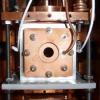 JILA instrument that uses a frequency comb to detect large, complex moleculesbased on the precise frequencies, or colors, of light they absorb. Themolecules are chilled and probed inside this chamber at temperatures nearabsolute zero. Credit: Spaun/
JILA instrument that uses a frequency comb to detect large, complex moleculesbased on the precise frequencies, or colors, of light they absorb. Themolecules are chilled and probed inside this chamber at temperatures nearabsolute zero. Credit: Spaun/


